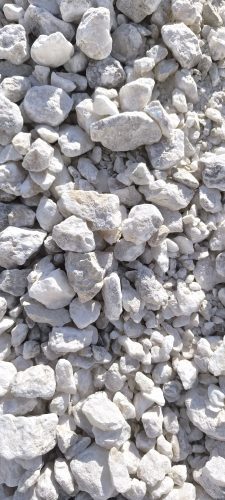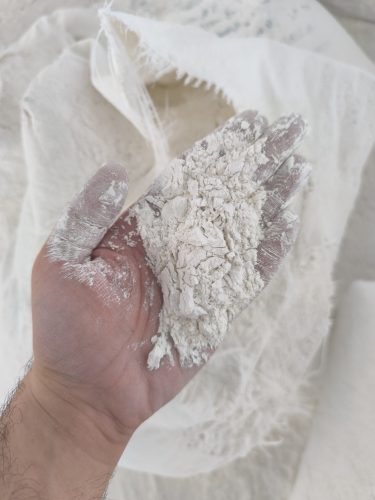Raw Gypsum Uses: A Comprehensive Guide
Introduction
Gypsum, scientifically known as calcium sulfate dihydrate (CaSO₄·2H₂O), is one of the most abundant minerals on Earth. Found in sedimentary rock layers across the globe, this versatile material has played a key role in human civilization for thousands of years. When extracted from quarries in its natural, unheated form, it is commonly referred to as raw gypsum or gypsum stone.
Unlike processed gypsum products, such as plaster of Paris, gypsum raw retains its natural crystalline structure and water content, making it suitable for a wide range of applications. From construction and agriculture to industry, environment, and even art, raw gypsum has proven to be an indispensable material.
This article provides a comprehensive guide to the uses of raw gypsum, its advantages, and its importance across multiple sectors.
What is Raw Gypsum?
Raw gypsum is the natural, unprocessed form of gypsum mineral that is directly obtained from deposits or quarries. It is often crushed or ground before being used but does not undergo calcination or heating.
Key Properties of Raw Gypsum:
-
Soft mineral (hardness 2 on Mohs scale)
-
White, gray, or slightly tinted in color
-
Contains about 20% water of crystallization
-
Easily ground into a fine powder
-
Non-toxic and naturally recyclable
Thanks to these unique characteristics, natural gypsum has been a reliable resource in both traditional and modern applications.
Raw Gypsum in Construction
Construction remains one of the largest consumers of raw gypsum worldwide. Its ability to regulate setting time, provide strength, and enhance durability makes it a critical material.
1. Gypsum Plaster and Drywall
One of the most common uses of gypsum raw is in producing gypsum plaster and drywall boards. These products are widely applied in interior walls, ceilings, and partitions because they are lightweight, fire-resistant, and easy to install.
2. Cement Manufacturing
Cement would set almost instantly without gypsum. By adding about 3–5% gypsum stone during grinding, the setting time of cement is controlled, ensuring workability. This small but crucial role makes gypsum mineral one of the most important additives in cement industries.
3. Decorative and Architectural Elements
Since ancient times, natural gypsum has been used to create sculptures, molds, and decorative features. From Egyptian pyramids to ornate European architecture, it has been valued for its smooth texture and versatility.
Raw Gypsum in Agriculture
Agriculture is another major sector where gypsum stone proves highly beneficial. Farmers and soil scientists use it to improve soil health, enhance crop yields, and manage salinity.
1. Soil Conditioner
Gypsum breaks up compacted clay soils, allowing roots to penetrate deeper. This results in better aeration and easier cultivation.
2. Reducing Soil Salinity and Sodicity
One of the standout features of gypsum stone is its ability to reclaim saline and sodic soils. It works by replacing excess sodium ions with calcium, restoring soil fertility and enabling healthier plant growth.
3. Nutrient Source
Gypsum raw provides essential nutrients—calcium and sulfur. Calcium strengthens plant cell walls, while sulfur is vital for protein synthesis. Together, they boost crop quality and productivity.
4. Improving Water Infiltration
Gypsum-treated soils allow water to penetrate more effectively, reducing surface runoff and minimizing erosion. This is particularly valuable in arid regions with water scarcity.
Industrial Applications of Raw Gypsum
Beyond farming and construction, gypsum mineral finds numerous industrial applications.
1. Ceramics and Glass Manufacturing
In ceramics and glass, gypsum stone acts as a fluxing agent, lowering melting points and enhancing product quality.
2. Paints and Coatings
Ground gypsum serves as a filler and extender in paints, improving texture, durability, and surface coverage.
3. Paper and Textile Industries
In paper production, natural gypsum improves printability and brightness. In textiles, it is sometimes used in fire-resistant treatments.
4. Food and Pharmaceuticals
Surprisingly, gypsum has a role in food and medicine. In Asia, gypsum raw is used as a coagulant in tofu production. It is also added to dietary supplements as a calcium source and used in some medicines as a filler.

Environmental Applications of Gypsum Raw
As sustainability becomes more important, the role of gypsum in environmental protection has grown significantly.
1. Water Treatment
Gypsum is used to reduce turbidity in water by binding fine particles, making it clearer and safer.
2. Waste Management
In industrial waste treatment, gypsum stone neutralizes acidity and helps stabilize heavy metals, reducing environmental hazards.
3. Reducing Carbon Footprint
Gypsum-based products are recyclable and contribute to sustainable construction practices, reducing dependence on energy-intensive materials like cement and concrete.
Raw Gypsum in Art and Culture
Artisans and sculptors have long valued gypsum. From plaster of Paris statues to fine decorative carvings, gypsum has been an artistic medium for centuries. Its ability to capture fine details makes it ideal for molds, models, and restoration work.
Advantages of Using Raw Gypsum
-
Abundant and inexpensive
-
Environmentally friendly and recyclable
-
Versatile across multiple industries
-
Improves agricultural productivity
-
Provides durable building materials
-
Reduces environmental impact

Raw Gypsum vs. Processed Gypsum
| Feature | Raw Gypsum | Processed Gypsum (Plaster of Paris) |
|---|---|---|
| State | Natural, unheated | Heated, partially dehydrated |
| Water Content | About 20% crystal water | Little or no water |
| Main Applications | Cement, soil treatment, farming | Molding, quick-setting construction, medical casts |
| Durability | Long-lasting | Sets quickly but less durable |
Challenges and Limitations
Despite its many advantages, gypsum raw does come with a few challenges:
-
Requires transportation from quarries, which increases cost in remote areas
-
Dust particles can cause mild respiratory irritation if inhaled during handling
-
Not suitable for exterior applications without protective treatment
-
Quality varies depending on the source and deposit purity
Frequently Asked Questions (FAQ)
1. What is raw gypsum mainly used for?
It is widely used in cement manufacturing, soil treatment, agriculture, and as a base material for plaster and boards.
2. Is gypsum raw safe for agriculture?
Yes. It is non-toxic and provides calcium and sulfur, both essential nutrients for plants.
3. Can gypsum stone be used directly in construction?
Usually, it is processed into plaster or drywall, but ground raw gypsum is an essential additive in cement manufacturing.
4. Is natural gypsum environmentally friendly?
Yes. It is a natural mineral, recyclable, and contributes to sustainable farming and green building.
5. Which countries produce the most gypsum?
The largest producers include China, the United States, Iran, Thailand, and Spain.
Conclusion
Gypsum raw is more than just a mineral—it is a cornerstone of modern life. From improving soil fertility and supporting sustainable agriculture to shaping the durability of cement and offering solutions in industrial production, its applications are vast and vital.
Its low cost, abundance, and eco-friendly nature make gypsum stone an ideal material for the future. Whether used in building homes, reclaiming farmland, producing food products, or creating art, gypsum stone continues to prove its unmatched versatility.
As industries evolve and sustainability becomes a global priority, natural gypsum will remain a trusted resource, ensuring balance between economic growth, environmental responsibility, and human needs.




